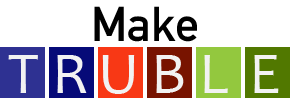Make Teaching with R in Undergraduate Biology Less Excruciating 2021
Modules from past FMNs
These are modules from past FMNs
Population Demography in Swirl
Version: 5.0
Basic Statistics
Version: 1.1
Setting Up Nonparametric Tests
Version: 1.0
Hardy-Weinberg Equilibrium: a swirl resource
Version: 1.0
Analyzing Nutrient Simulation Experiments with a one-way ANOVA
Version: 1.0 Adapted From: Conducting Analysis of Variance (ANOVA) in R with swirl v1.0
Cleaning Data with R and the Tidyverse in Swirl
Version: 1.0
Graphing grouped continuous data in R with swirl
Version: 1.0
Interpreting one-factor ANOVA in R with swirl
Version: 1.0
Checking Normality in R with swirl
Version: 1.0
One-way ANOVA in R with swirl
Version: 1.0
Island Biogeography
Version: 1.0
R Subsetting Tutorial
Version: 1.0
Optimal Foraging in Swirl
Version: 2.0
Working with Datasets in R swirl
Version: 1.0
Importing Data into R
Version: 1.0
Avian Censys Analysis
Version: 1.0
Exploring the functionality of R
Version: 1.0
Evolutionary Ecophysiology swirl lesson
Version: 1.0
Binomial test
Version: 1.0
Two-Way ANOVA
Version: 1.0
Histograms and Boxplots
Version: 1.0
